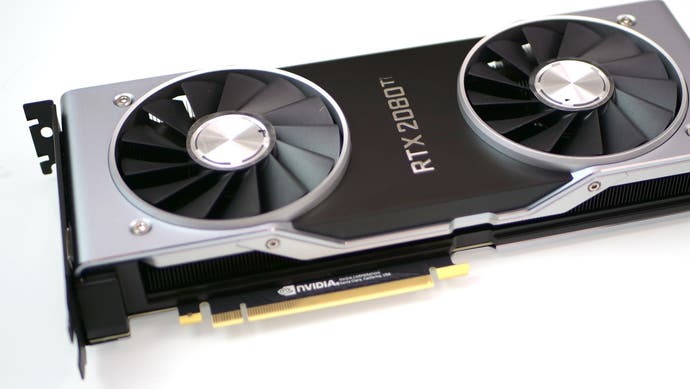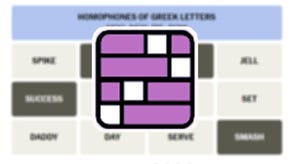The GPU power ladder: all current graphics cards ranked
Tried and tested by Digital Foundry.
The Digital Foundry GPU power ladder is simple: it ranks all current graphics cards on the market from most powerful to least powerful. Our ranking is based on our comprehensive real-world testing in nine modern and legacy games; no synthetic benchmarks.
For each card, we'll include average frame-rates at common resolutions and benchmark runs in one legacy title (Crysis 3) and one modern game (Shadow of the Tomb Raider) so you can see how each card tested compares against others in its tier. Each game was tested at highest settings with an overclocked high-end CPU. If you want to see more in-depth performance figures and see how we tested, you can find links to our full reviews and benchmark pages. We've also linked to each card on Amazon; clicking these links helps support the work we do.
If you're looking instead for quick recommendations, then our best graphics cards 2020 article is worth reading too. This includes our current picks for the fastest graphics card, the best value graphics card and the best budget GPU, plus recommendations for specific screen resolutions and more.
That just about sums things up, so let's get to the results - starting with a glance at the current rankings, with each card shown compared to the leading RTX 2080 Ti.

Older graphics cards: where they rank
It's worth mentioning that we are focusing here on all current graphics cards, so models with dwindling stock have been excluded. (You can read more about why in the FAQ.) With that in mind, here are quick summaries of the cards that didn't quite make it - including their tier (with relative strength against RTX 2080 Ti at 1440p), average fps at three resolutions, closest competitor and a link to their full benchmarks.
| GPU | Tier | 1080p | 1440p | 2160p | Closest to... | Link |
|---|---|---|---|---|---|---|
| GTX 1080 Ti | 1 (78%) | 131fps | 94fps | 52fps | RTX 2080 is +2fps | 1080 Ti benchmarks |
| Radeon 7 | 1 (76%) | 124fps | 92fps | 52fps | 2070 Super +0fps | R7 benchmarks |
| GTX 1080 | 2 (64%) | 108fps | 77fps | 41fps | RX 5700 is +1fps | 1080 benchmarks |
| Vega 64 | 3 (60%) | 100fps | 73fps | 40fps | RTX 2060 is -2fps | V64 benchmarks |
| GTX 1070 Ti | 3 (57%) | 99fps | 69fps | 37fps | RTX 2060 is +2fps | 1070 Ti benchmarks |
| Vega 56 | 3 (55%) | 94fps | 66fps | 36fps | RTX 2060 is +5fps | V56 benchmarks |
| GTX 1070 | 3 (50%) | 88fps | 60fps | 32fps | GTX 1660 Ti is -1fps | 1070 benchmarks |
| GTX 970 | 5 (32%) | 55fps | 38fps | N/A | RX 570 is +1fps | N/A |
| GTX 960 4GB | 6 (17%) | 34fps | N/A | N/A | RX 560 is +1fps | N/A |
If you're only interested in graphics cards at a given tier, you can use these links to skip ahead.
GPU Power Ladder: six tiers of gaming performance
- Tier 1: RTX 2080 Ti, RTX 2080 Super, RTX 2080, RTX 2070 Super
- Tier 2: RX 5700 XT, RTX 2070, RTX 2060 Super, RX 5700
- Tier 3: RTX 2060, RX 5600 XT, GTX 1660 Ti, GTX 1660 Super
- Tier 4: GTX 1660, RX 590, RX 5500 XT 8GB, RX 5500 XT 4GB
- Tier 5: RX 580, GTX 1060, GTX 1650 Super, RX 570
- Tier 6: GTX 1650, GTX 1050 Ti, GTX 1050 3GB, RX 560
Tier 1: RTX 2080 Ti, RTX 2080 Super, RTX 2080, RTX 2070 Super
This tier contains the best consumer graphics cards on the market, all the way up to the four-figure RTX 2080 Ti. If you're looking to game at 4K without sacrificing detail settings, this is where you want to be. Here's how the top four GPUs compare.
Crysis 3: very high, SMAA T2X
Shadow of the Tomb Raider DX12: Highest, TAA
1. Nvidia GeForce RTX 2080 Ti
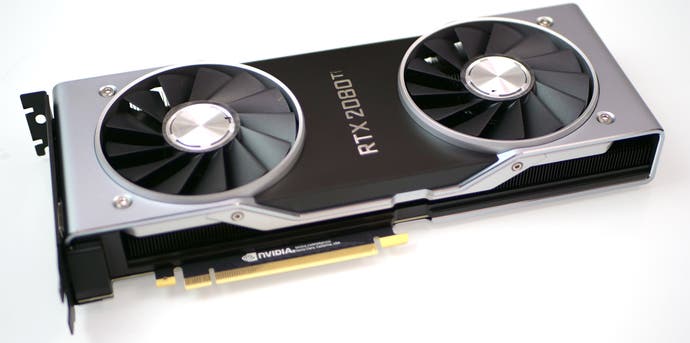
151fps 1080p • 121fps 1440p • 69fps 4K
The RTX 2080 Ti is the fastest consumer graphics card on the market by a significant margin. (The Titan RTX is a bit faster, but that workstation card is twice as expensive.) As well as possessing an immense amount of raw horsepower, the 2080 Ti also comes with hardware-accelerated real-time ray tracing (RTX) and deep learning super sampling (DLSS), two forward-looking features that are presently only supported in a handful of games. While the RTX 2080 Ti is a strong card, its four-digit price tag keeps it out of consideration for all but the most deep-pocketed PC builders.
2. Nvidia GeForce RTX 2080 Super

139fps 1080p • 103fps 1440p • 57fps 4K
The RTX 2080 Super is noticeably better than the RTX 2080, GTX 1080 Ti and RTX 2070 Super while not challenging the supremacy of the RTX 2080 Ti. Like other RTX cards, it includes dedicated ray tracing and deep learning hardware, alongside niceties like a USB-C port for VR headsets (and indeed, almost anything else that connects via USB-C). This card replaces the RTX 2080 at the same recommended retail price.
3. Nvidia GeForce RTX 2080
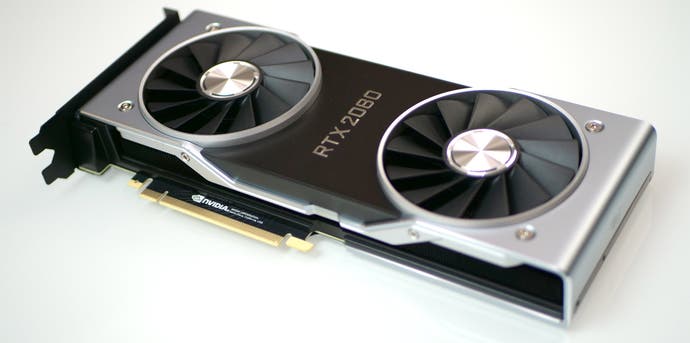
133fps 1080p • 97fps 1440p • 54fps 4K
The RTX 2080 provides slightly better performance than Nvidia's last-generation flagship card, the GTX 1080 Ti. This card has been replaced by the RTX 2080 Super, but stock is still widely available and temporary price reductions mean the card is still a viable option. Just make sure you can't get an RTX 2080 Super for the same money!
4. Nvidia GeForce RTX 2070 Super

128fps 1080p • 92fps 1440p • 50fps 4K
The RTX 2070 Super is the replacement for the RTX 2070, offering increased performance at the same price. The card is ideal for 1080p and 1440p gaming, but 4K is also within reach with just a few settings tweaks. As with other RTX cards, hardware-accelerated ray tracing and deep learning super sampling (DLSS) features could add value if you play games that support them.
Tier 2: RX 5700 XT, RTX 2070, RTX 2060 Super, RX 5700
These cards aren't the fastest available, but they still provide excellent performance and they cost much less than the leading cards. Expect to be able to stretch to 4K in many titles, but 1440p or high refresh-rate 1080p is the sweet spot. Here's how this quartet of graphics cards compare:
Crysis 3: very high, SMAA T2X
Shadow of the Tomb Raider DX12: Highest, TAA
5. AMD Radeon RX 5700 XT

120fps 1080p • 86fps 1440p • 46fps 4K
The RX 5700 XT uses AMD's new RDNA architecture and the same 7nm process that debuted on the Radeon 7, bringing a surprising amount of horsepower to a modestly-priced package. The card burns through more power than its little brother, the RX 5700, but does scale better to higher resolutions thanks to its improved performance.
6. Nvidia GeForce RTX 2070

115fps 1080p • 82fps 1440p • 44fps 4K
The RTX 2070 offers good performance at 1080p and 1440p, while also stretching to 4K in modern games if you're willing to turn some graphics settings down. It's a little faster than the older GTX 1080. The RTX 2070's price/performance combo saw it become the most popular RTX card in the Steam Hardware Survey, but expect it to wane now that its replacement has arrived. Still, RTX 2070 cards are still available in wide numbers, and new price drops may make them a good value choice - just check 2070 Super prices too!
7. Nvidia GeForce RTX 2060 Super
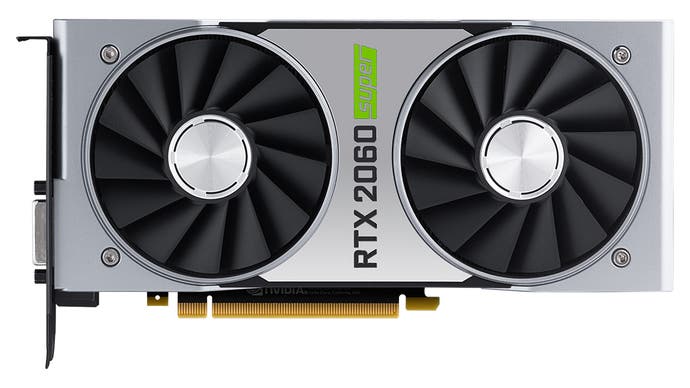
113fps 1080p • 80fps 1440p • 43fps 4K
The RTX 2060 Super is an excellent value choice for 1080p and 1440p gaming, occupying the same price bracket as the old RTX 2060 but offering more VRAM (8GB vs 6GB) and increased compute power. That makes this card a more future-proof option than its predecessor. However, the RTX 2060 remains on sale at a lower price, providing a better price to performance ratio - at least in the short term.
8. AMD Radeon RX 5700
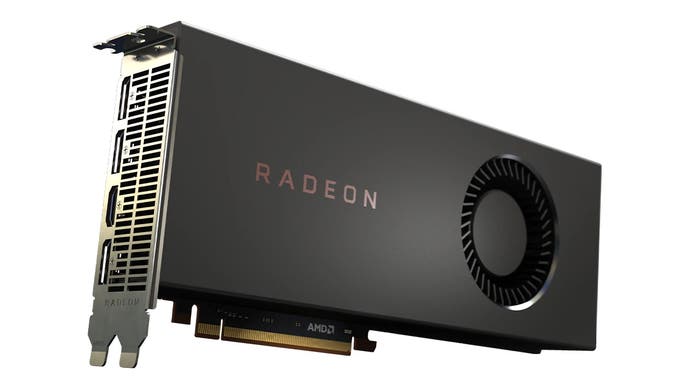
109fps 1080p • 77fps 1440p • 42fps 4K
The RX 5700 is another new card from AMD, using a 7nm process and the advanced RDNA architecture to provide excellent 1080p and 1440p performance for a reasonable price. The vanilla RX 5700 runs more efficiently than the XT model, but doesn't have quite as much top-end grunt. However, reports suggest it's possible to flash the RX 5700 XT BIOS onto the regular model, potentially unlocking extra performance. We haven't tried this and don't recommend it, as you could end up with a brick, but it's a point of interest nonetheless.
Tier 3: RTX 2060, RX 5600 XT, GTX 1660 Ti, GTX 1660 Super
This competitive tier performs well at 1440p and 1080p, without the need to reduce detail settings in all but the most demanding games. It's also home to the cheapest card with hardware-accelerated ray tracing and DLSS, the RTX 2060. The recent removal of the Vega 56 and Vega 64 mean that Nvidia's best recent GTX cards move up a tier in our ranking, providing some desperately-needed room in the crowded lower tiers of the power ladder.
The RX 5600 XT also makes its debut here. This is a strong card, but the situation is complicated - a BIOS upgrade pushed by AMD a few days before launch means that some models are substantially more powerful than others, with 12Gbps memory upped to 14Gbps and boost frequencies raised as well. Check out our RX 5600 XT review for the full details, or read AMD's list of different RX 5600 XT models.
Crysis 3: very high, SMAA T2X
Shadow of the Tomb Raider DX12: Highest, TAA
9. Nvidia GeForce RTX 2060
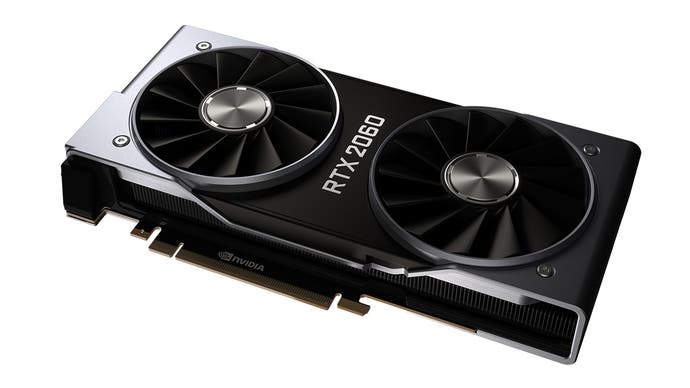
102fps 1080p • 71fps 1440p • 37fps 4K
The RTX 2060 occupies a unique place in Nvidia's lineup, being the cheapest card to offer hardware-accelerated ray tracing. It performs well too, particularly in newer games, with solid results at 1080p and 1440p. Lower CPU utilisation means that the RTX 2060 actually performs better at 1080p gaming than the Vega 64, although it loses out to the AMD card at higher resolutions. The RTX 2060 recently saw a permanent price reduction thanks to the introduction of the faster RTX 2060 Super, making it an excellent value choice for 1080p and 1440p gaming with RTX and DLSS support.
10. AMD Radeon RX 5600 XT

97fps 1080p • 68fps 1440p • 36fps 4K
This card sits between the RX 5500 XT and RX 5700, delivering strong 1080p performance and decent 1440p frame-rates too. The RX 5600 XT is a fascinating product, thanks to a late-breaking BIOS update that boosts performance substantially - with clock speeds of 1750MHz and effective memory speed of 14Gbps, compared to 1620Mhz and 12Gbps on the reference product. It's well worth choosing an OC model for that reason, as long as the price is close to the $299 mark. Note that our average frame-rates here are based on the reference model; the OC model's averages are 102fps at 1080p, 72fps at 1440p and 38fps at 4K. Check out the review linked below for a closer look at performance between the two variants - and be sure to read AMD's breakdown of which models require BIOS upgrades to work at full speed, ship with BIOS upgrades installed or aren't certified to work at the higher speeds.
11. Nvidia GeForce GTX 1660 Ti
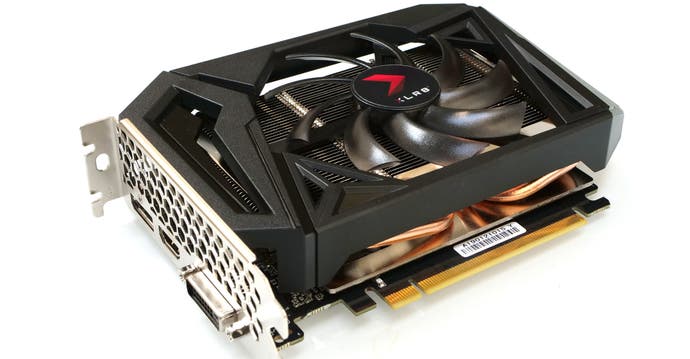
88fps 1080p • 60fps 1440p • 31fps 4K
The GTX 1660 Ti is an unusual card, offering some advantages of Nvidia's Turing architecture without dedicated hardware for machine learning or ray tracing. That results in a cheaper card overall, able to beat out the GTX 1070 in modern titles but fall behind in older ones.
12. Nvidia GeForce GTX 1660 Super
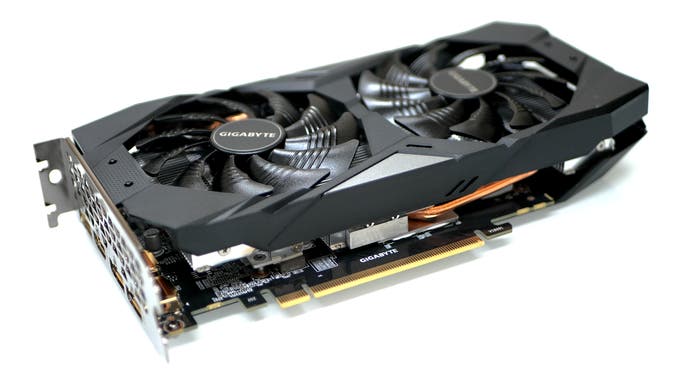
85fps 1080p • 59fps 1440p • 30fps 4K
The GTX 1660 Super is a better version of the original GTX 1660 with faster GDDR6 memory. The 75 per cent increase in memory clocks makes this card about 15 per cent faster in most games we tested, allowing it to come very close indeed to the more expensive GTX 1660 Ti. That means you should opt for whichever card is cheaper in your region - probably the Super.
Tier 4: GTX 1660, RX 590, RX 5500 XT 8GB, RX 5500 XT 4GB
This new tier is formed by a quartet of recently released cards from Nvidia and AMD, including the two RX 5500 models that appeared at the end of 2019. 1440p gaming is getting a little harder to achieve without sacrificing visual fidelity, but 1080p performance is still excellent.
Crysis 3: very high, SMAA T2X
Shadow of the Tomb Raider DX12: Highest, TAA
13. Nvidia GeForce GTX 1660
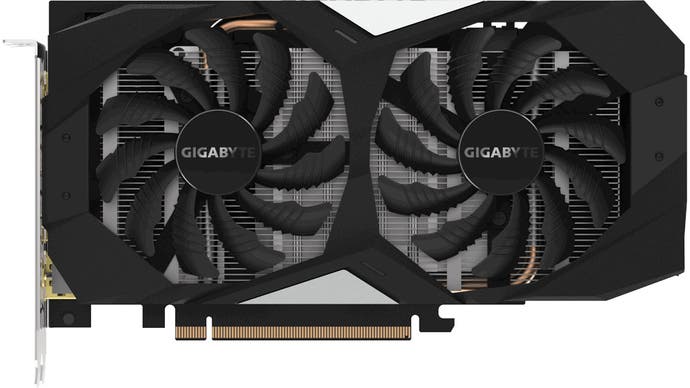
74fps 1080p • 51fps 1440p • 26fps 4K
The GTX 1660 is a close match for AMD's RX 590, with the AMD card proving stronger at 4K but Team Green taking the slight edge at 1080p and 1440p. However, it's a close margin easily within the margin of error, so choosing based on price or features could make more sense.
14. AMD Radeon RX 590

73fps 1080p • 50fps 1440p • 26fps 4K
The RX 590 competes against the GTX 1660 in the lower mid-range, offering strong 1080p performance and reasonable 1440p results as well. The refresh-of-a-refresh card doesn't offer much new in terms of features, but the 12nm process used allows for higher clocks without additional heat or power consumption - not a bad combination!
15. AMD Radeon RX 5500 XT 8GB

72fps 1080p • 50fps 1440p • 26fps 4K
The RX 5500 XT is the long-awaited successor to the RX 580, operating in a similar performance envelope using AMD's more advanced RDNA architecture and a 7nm process. That means slightly better frame-rates than the old RX 580 and RX 570 while using less power and producing less heat. The 8GB version of the card is also more steadfast than its 4GB brother, giving you the option to play at higher resolutions and with higher texture settings without running out of VRAM and taking a heavy hit to frame-rates. However, if actual in-game performance is all you care about, then a cut-price RX 500-series 8GB card may still offer better value... while supplies last.
16. AMD Radeon RX 5500 XT 4GB
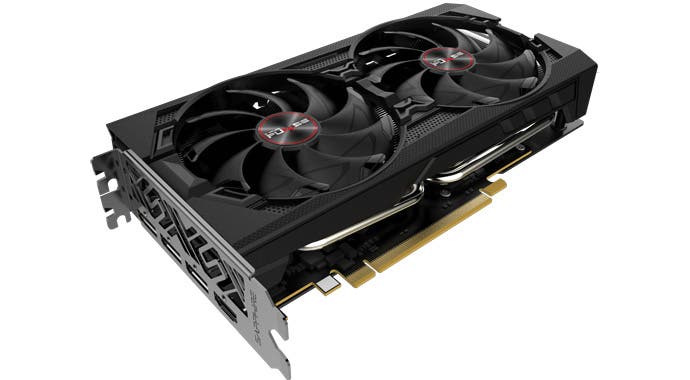
69fps 1080p • 47fps 1440p • 24fps 4K
The 4GB version of the RX 5500 XT has half the amount of VRAM as its bigger brother but is otherwise identical, so you can expect the same performance in most games. However, once you do run out of VRAM, performance tanks hard, so we recommend sticking to lower texture settings and lower resolutions if possible. That makes the 4GB card a little less future-proof than the 8GB alternative, but given the price differential the cheaper card offers better value for 1080p gaming.
Tier 5: RX 580, GTX 1060, GTX 1650 Super, RX 570
We're safely in the mainstream now, with the best value-for-money cards on the market. The GTX 1060 is the most popular GPU by a significant margin, but aggressive pricing from AMD means that the RX 580 and RX 570 may be better choices. Meanwhile, the new GTX 1650 Super is a bit underwhelming, largely offering worse performance than the RX 5500 XT 4GB that was released at nearly the same time.
Crysis 3: very high, SMAA T2X
Shadow of the Tomb Raider DX12: Highest, TAA
17. AMD Radeon RX 580
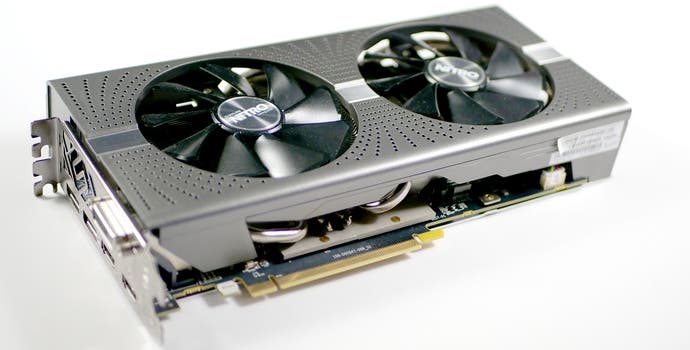
66fps 1080p • 46fps 1440p • 24fps 4K
The RX 580 is the best value graphics card for 1080p gaming, beating out the GTX 1060 by a small but significant margin and often appearing at a lower price. 1440p gaming is possible too, but you will need to make quality setting sacrifices to ensure a playable 60fps experience.
18. Nvidia GeForce GTX 1060 6GB
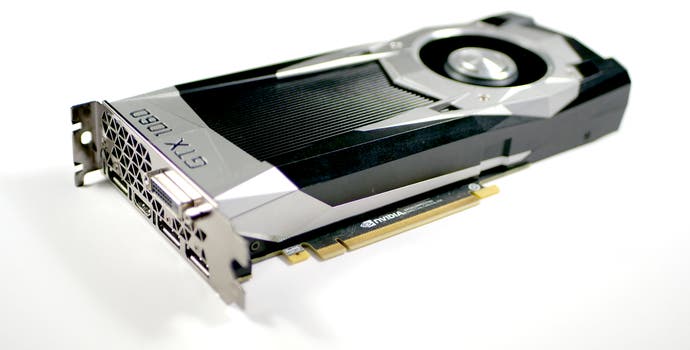
64fps 1080p • 44fps 1440p • 23fps 4K
The GTX 1060 is available in both 3GB and 6GB varieties, with the results here shown from the 6GB version we recommend. This graphics card is barely outperformed by the RX 580 on aggregate, but both cards can take the lead in certain games - with Nvidia hardware doing best on DX11, while AMD have the advantage on DX12 and Vulkan titles.
19. Nvidia GeForce GTX 1650 Super

66fps 1080p • 43fps 1440p • 21fps 4K
The GTX 1650 Super is slightly faster than the old GTX 1060 at 1080p, but falls behind at resolutions increase. Given its performance is significantly behind the RX 5500 XT, another new card available at a similar price, there's not much reason to opt for this card compared to its competitors. However, Nvidia has proved itself willing to discounts its cards aggressively, so at the right price the 1650 Super could become a more viable alternative to AMD's low-tier dominance.
20. AMD Radeon RX 570 4GB
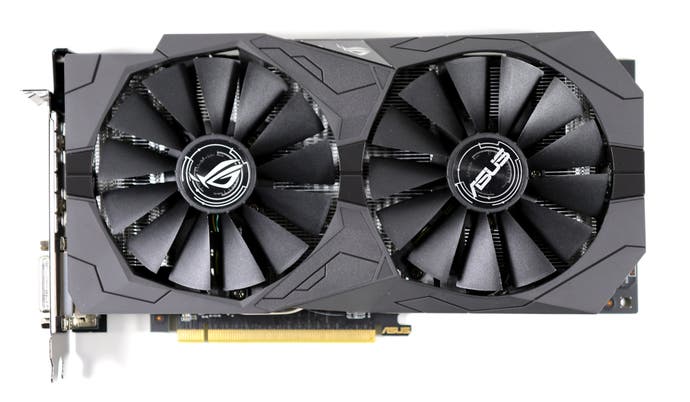
58fps 1080p • 40fps 1440p
This cut-down version of the RX 570 still works well at 1080p, competing with the 3GB version of the GTX 1060 in terms of frame-rates. However, it can be overclocked to near RX 580 levels of performance, boosting its value significantly for silicon lottery winners. Recent price cuts have made this a standout choice.
Tier 6: GTX 1650, GTX 1050 Ti, GTX 1050 3GB, RX 560
These entry-level cards are tuned for 1080p gaming, providing acceptable performance at a very low price point. More expensive cards will provide a little more longevity and the possibility of 1440p gaming, but if you have a limited budget this is as good as it gets. Be sure to check prices on the next tier up too, as recent reductions may bring far better performers like the RX 570 into play.
Crysis 3: very high, SMAA T2X
Shadow of the Tomb Raider DX12: Highest, TAA
21. Nvidia GeForce GTX 1650
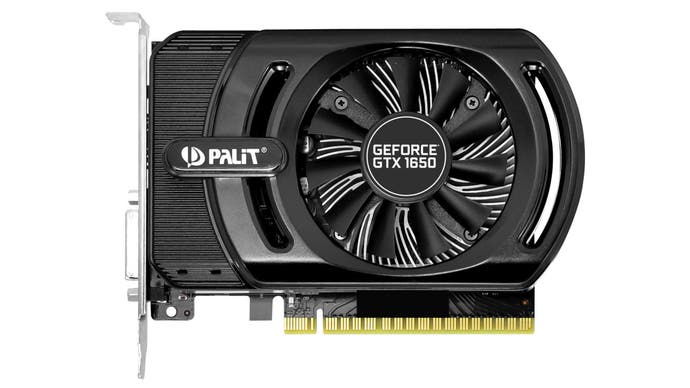
48fps 1080p • 32fps 1440p
The GTX 1650 is the weakest product that Nvidia have launched in recent memory, costing the same price as the competing RX 570 yet offering significantly worse performance in most games. While single-slot designs with low power requirements (and no additional PCI-e power needed) may offer a good solution for those looking to upgrade an office tower to play games, everyone else should steer clear.
22. Nvidia GeForce GTX 1050 Ti
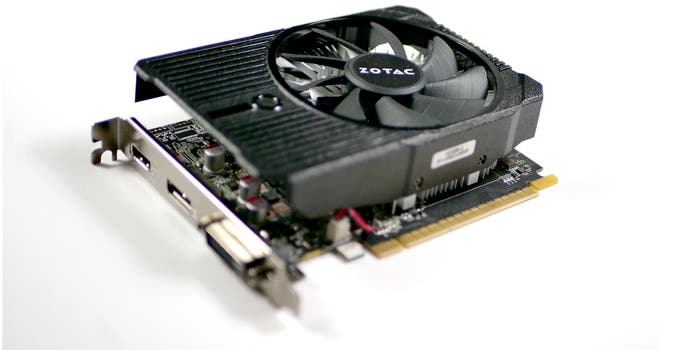
42fps 1080p • 27fps 1440p
The GTX 1050 Ti is the fastest entry-level card on the market, providing decent 1080p performance with a good amount of VRAM, preventing issues in titles like Battlefield 1. However, the card doesn't really have the chops to attempt 1440p gaming in modern games.
23. Nvidia GeForce GTX 1050 3GB

36fps 1080p • 23fps 1440p
We previously named the GTX 1050 3GB our favourite budget card on the market, thanks to its decent 1080p performance, low power requirements and entry-level price. While both 2GB and 3GB versions of these cards exist, stock is getting hard to find as newer models are released.
24. AMD Radeon RX 560 4GB

34fps 1080p • 21fps 1440p
The RX 560 is a confusing card, offered in an unnecessarily large number of variations with varying compute units (CUs), video memory, clock speeds, power requirements and more. Even in the best-case scenario represented by these benchmarks - a 4GB version of the card with the full complement of 16 CUs - the performance here is really nothing to write home about.
Frequently asked questions
Why isn't my graphics card included on this list?
Note that we've been selective with the graphics cards we have included, for a few different reasons. Most importantly, the ranking is derived from average performance at 1440p in nine different games that we've been using as benchmarks for a while. However, some older graphics cards haven't been tested in the more recent titles, like Shadow of the Tomb Raider and Assassin's Creed Odyssey, so any average we derived wouldn't be comparable. Retesting these older cards would ameliorate this issue, but with so many possible candidates it would be a substantial undertaking.
There are also some cards, like a few GTX 10-series models, which we do have data for but we haven't included on this list. Part of this is down to readability - we don't want this page to get increasingly long and unwieldy over time as new GPUs are released because old GPUs never leave. Instead, we've decided to only include graphics cards that are widely available in new condition in the US and UK for a fair price.
For models that didn't make the cut, we've made a cheat-sheet near the top of this page with a summary of the data we have, what tier they'd fall into and what card(s) they most closely resemble in performance. Note that the average can be a bit deceiving - our testing shows the GTX 1660 Ti is faster than a GTX 1070 in newer games, but slower in older titles, so there's a difference in performance here despite working out to be about as fast on average. We've also linked to full benchmark pages where they exist, so that you can see how these cards perform in greater detail.
Can I see the chart with actual fps values?
Sure, here you go.
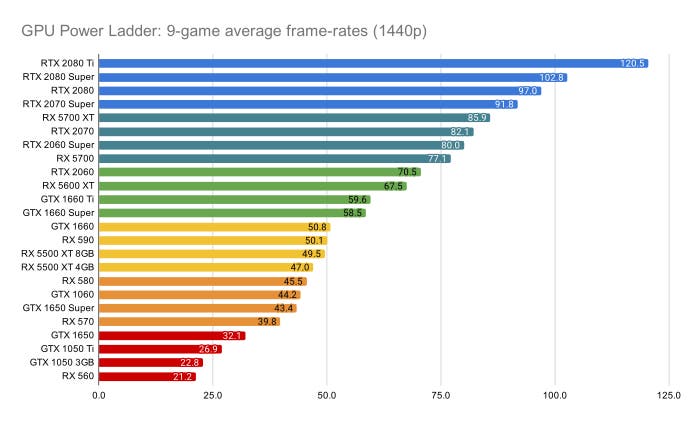
We hope this GPU power ladder has been helpful! We plan to update this page over time as new graphics cards are released and older graphics cards disappear off the market, so stay tuned for the next iteration! In the meantime, why not check out our current recommendations for the best graphics cards on the market?
